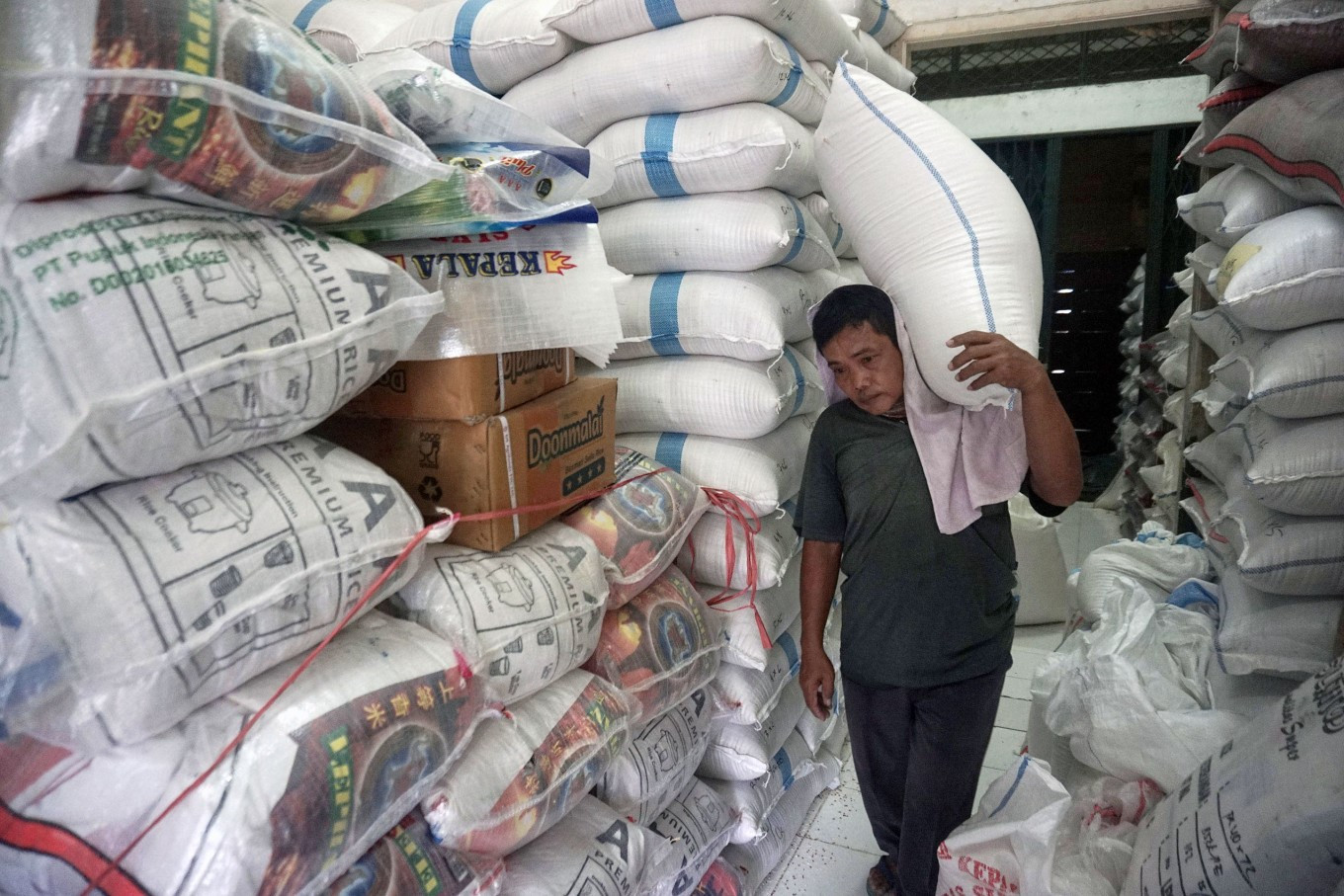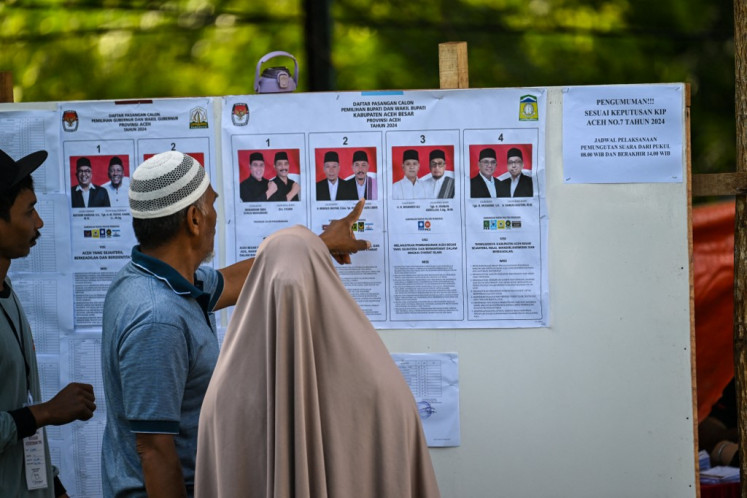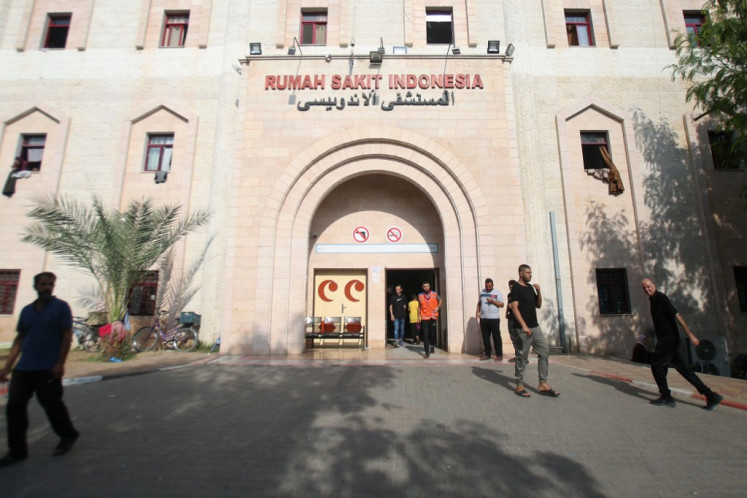Popular Reads
Top Results
Can't find what you're looking for?
View all search resultsPopular Reads
Top Results
Can't find what you're looking for?
View all search resultsRethinking food supplies to meet demand in urban areas
History has shown that even milder El Niño events can have far-reaching implications on food supplies in the country.
Change text size
Gift Premium Articles
to Anyone
I
ndonesia has witnessed remarkable growth in urban population over the past decade. As of 2022, the country’s population was estimated at 273 million people, of whom 55 percent reside in urban areas.
The high population density in urban areas always amplifies the challenge of meeting the rapid growth of food demand. With limited resources available for agriculture, urban areas’ dependency on external food production centers becomes more pronounced.
Jakarta provides a prominent example of its struggles to fulfill its food demand. According to official data, Jakarta can only provide a small percentage of its total food demand. The city can meet merely 1.2 percent of its demand for rice, 0.5 percent of its demand for vegetables and 19.6 percent of its demand for fruits through local production within its territory. While it is no surprise, to meet its food demand, Jakarta heavily relies on food supplies from production centers that vary depending on the commodity. Smaller quantities of food such as fruits or vegetables are also obtained from peri-urban areas like Bogor.
Recently, the alarming specter of El Niño has loomed large over Indonesia, with an expected peak occurring between August and October 2023. As the rainfall dwindles, crop failures become an all-too-familiar tragedy, leading to reduced agricultural yields and compromised food production. The impact extends far beyond the borders of the countryside, encroaching into the heart of Indonesia's vibrant urban centers.
While the Indonesian Meteorological, Climatological and Geophysical Agency (BMKG) has forecast a weak-to-moderate El Niño for this year, it is imperative that holistic approaches with a sense of preparedness and dedication are taken. History has shown that even comparatively mild El Niño events can have far-reaching implications.
The Food Crops Directorate General’s report indicates that from 1989 to 2016, El Niño resulted in a drought that affected 850,000 hectares of rice crop areas. This led to a significant 5 percent decrease in rice production, which not only created instability in rice supply in the markets but also increased prices. The case is only for rice, leaving out other vital food commodities that may present even more intricate challenges.
In relevance to the above, the COVID-19 pandemic from 2020 to 2022 has provided invaluable lessons about how vulnerable food security in urban areas is. During that period, despite high food production in the production centers, cities experienced food shortages due to disrupted supply chains.
The government has been developing scenarios to ensure food security during El Niño in the country, particularly in urban areas. The disturbances seen during COVID-19 actually highlight the multitude of potential obstacles urban areas must overcome to ensure food is available, affordable and accessible for their residents, especially during times of disturbances. Then the question arises, what is the best strategy to strengthen food security in urban areas?
In this current delicate dance between the El Niño phenomenon, urban food demand growth and food security ambition, the issue of food loss and waste emerges as a pivotal link – one that connects the dots and holds the key to resilience. The food loss and waste issue in Indonesia, unfortunately, remains unseen. Yet the impact is profound and complex.
In 2021, a study conducted by the National Development Planning Agency (Bappenas) revealed that Indonesia has a significant problem with food loss and waste. Each person is estimated to waste between 115 to 184 kilograms of food annually. Not to mention the amount of food loss throughout the value chain from the farm to pre-consumption. In contrast, the World Food Program reported that 22.9 million Indonesians struggle to get enough food for their daily needs.
The severity of the problem escalates when food loss and waste take place in urban areas. Imagine distributing trucks filled with fresh vegetables from Magelang, Central Java, to Jakarta. Due to suboptimal handling and packaging practices, coupled with the extended transportation route, the freshness of the products often is significantly diminished. In some cases, it even leads to spoilage. Consequently, it is unsurprising to witness piles of wasted vegetables accumulating in the markets.
Studies also show urban residents are prone to wasting more food, whether at home, restaurants or cafes. The increased income in urban areas has enabled people to purchase more food, but the lack of proper meal preparation skills, limited ability to compost at home, and uncontrolled consumption behaviors have significantly contributed to food wastage, causing disposal in landfills.
The Food and Agriculture Organization (FAO) has identified that food losses and waste are significant indicators of an inefficient food system. Without interventions, these will only increase, leading to even more losses in social, economic and ecological respect.
Indonesia's food policy places a strong emphasis on achieving food security through a production-oriented approach, particularly amid disturbances. To ensure food security, farmers in production centers are pushed to produce as high a quantity as possible, without any genuine measurement for resource efficiency. Recently, urban communities are also encouraged to cultivate food using available land, employing particular techniques such as hydroponics or rooftop farming.
The bad news is merely increasing production without addressing issues related to food loss and waste only results in massive misuse of resources from energy to capital. Even with the increased production in rural areas and growing practices of urban farming, it is doubted that the efforts can solely strengthen urban food security.
Food is a multifaceted entity that extends well beyond how much the nation can produce, or what is served in the plates. Food production-oriented must be shifted into food system-oriented. If urban areas are unable to produce enough food, then the areas can prioritize efforts such as reducing food loss and waste to improve the overall food system.
In the end, the efforts can play a crucial role in achieving food security, not only in urban areas but also on a broader scale.
***
The writer is a food system specialist.










